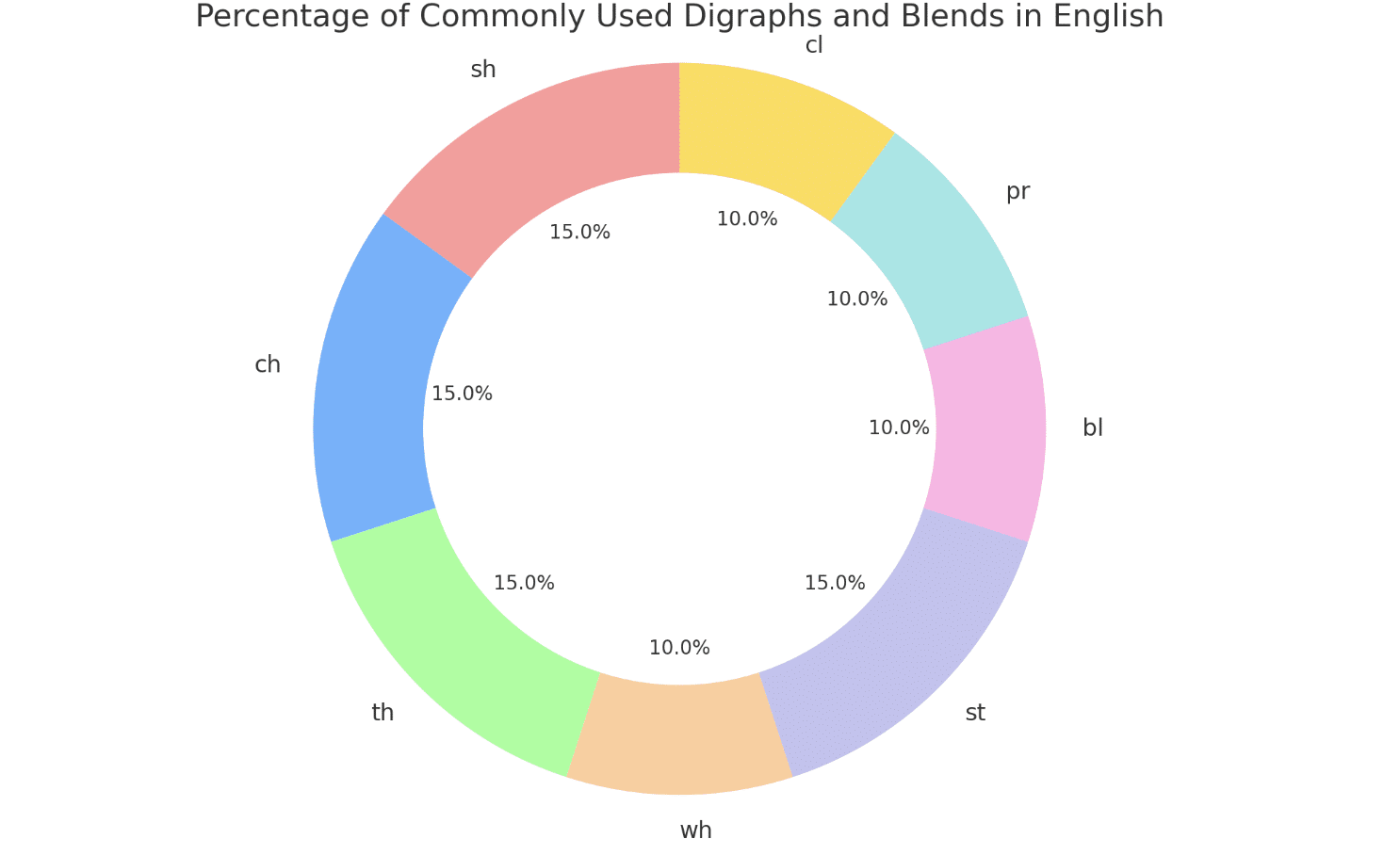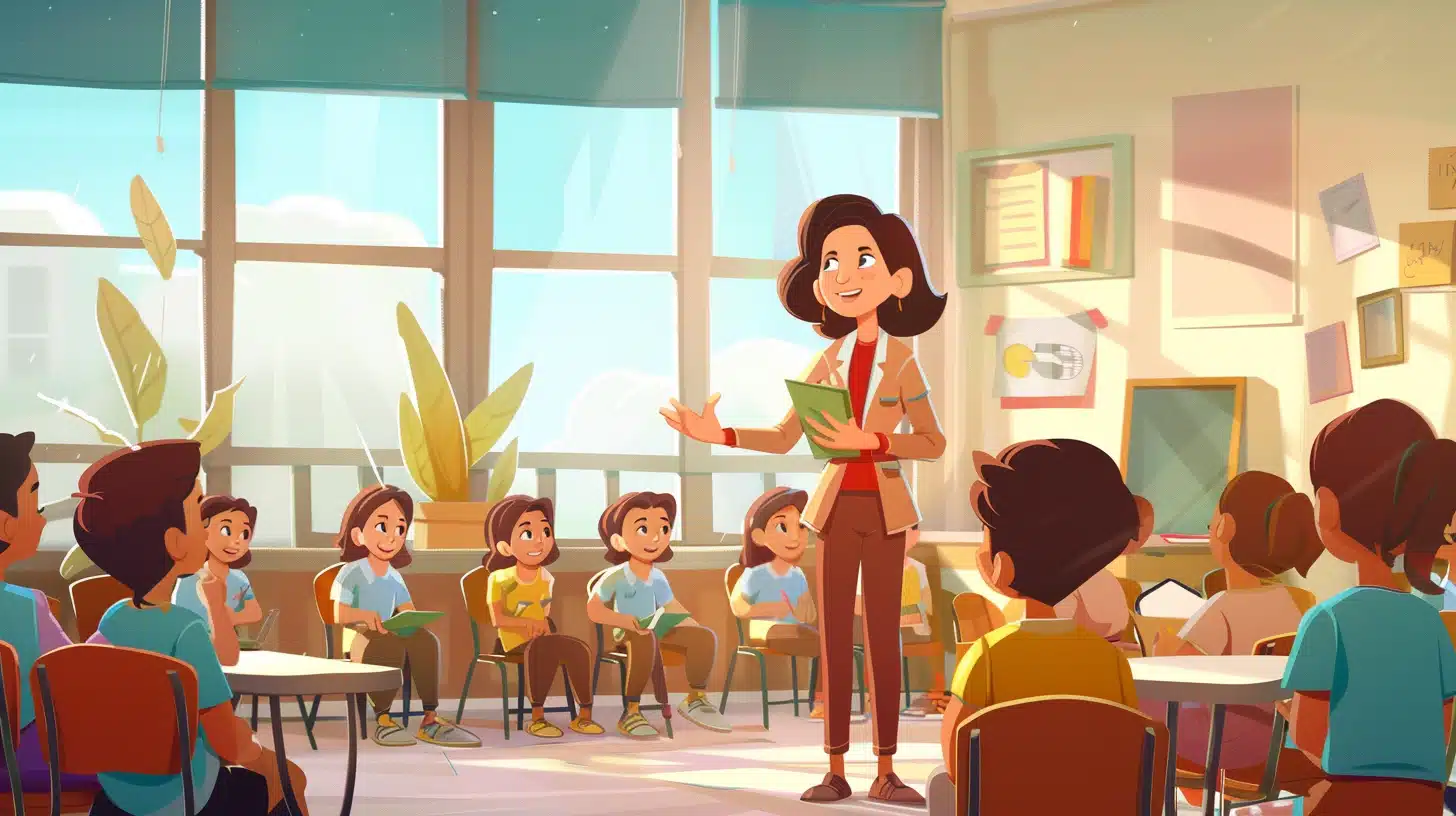Teaching young learners to read and spell words with digraphs and blends can be challenging.
These letter combinations often confuse students, leading to frustration and slower progress in literacy skills.
However, by understanding the importance of digraphs and blends and using effective teaching strategies, educators can help children master these crucial components of the English language.
In this guide, we’ll explore the significance of teaching digraphs and blends, provide practical tips for introducing these concepts in the classroom, and share engaging activities that make learning fun and memorable.
Whether you’re a seasoned teacher or new to the profession, this article will equip you with the knowledge and tools to support your students in becoming confident readers and spellers.
Understanding Digraphs and Blends
Phonics elements are the building blocks of language, focusing on the relationship between letters and their corresponding sounds.
Digraphs and blends are two essential components of phonics, and they play a crucial role in helping children learn to read and spell accurately.
Digraphs are pairs of letters that work together to produce a single, distinct sound.
The resulting phoneme often differs from the sounds the individual letters typically make. For example, the letters “s” and “h” combine to form the /sh/ sound in words like “ship” or “dash.”
On the other hand, blends are combinations of two or more consonants where each letter retains its original sound.
However, these sounds are pronounced closely together, forming a segment within a word. For instance, in the word “stop,” the letters “s” and “t” blend while maintaining their sounds.
| Aspect | Digraphs | Blends |
|---|---|---|
| Sound Production | The letters combine to produce one new sound. | Each letter in the blend can be heard in the pronunciation. |
| Usage | Often used in the middle or end of words. | Commonly found at the beginning or end of words. |
| Learning Focus | Recognition of the pair as a single sound unit. | Learning to pronounce each sound separately but quickly. |
| Visual Cues | Recognized as a single unit in words. | Recognized as a cluster of letters contributing to a sound. |
| Phonemic Awareness | High, as children must learn new sounds from familiar letters. | Moderate, as the sound of each letter is known, just faster. |
Identification and Examples
| Digraphs | Blends |
|---|---|
| ch – check | bl – block |
| sh – ship | st – stop |
| th – thin | fl – flag |
| ph – phone | gr – grape |
| wh – whale | tr – truck |
| ck – duck | cl – clown |
| ng – long | br – brick |
| gh – enough | cr – crab |
| qu – quick | sn – snake |
| kn – knee | sl – slip |
| wr – write | pl – plant |
| gn – sign | dr – drum |
| mb – thumb | fr – frog |
| sc – scene | gl – glass |
To help readers recognize digraphs and blends in words, it’s essential to discuss both visual cues and auditory clues.
Digraphs often appear in specific positions within words, such as “sh” at the beginning or end of a word (e.g., “ship” or “bash”).
Blends typically occur at the beginning of words, with common combinations like “bl,” “st,” or “cl” (e.g., “blue,” “stop,” or “class”).
When listening to words, students can identify digraphs by paying attention to sounds that differ from the individual letter sounds.
For blends, they should focus on hearing each letter sound pronounced closely together.
Benefits of Learning Digraphs and Blends

1. Increased Reading Speed
As students master digraphs and blends, they begin to recognize these patterns automatically without the need for conscious decoding.
This automaticity leads to faster word recognition, allowing students to read more words in less time, ultimately enhancing their reading fluency.
2. Application in Spelling Rules
Many spelling rules in English are based on the presence of digraphs and blends.
For example, the “silent e” rule often applies to words ending in consonant blends (e.g., “make,” “tale”).
Understanding these patterns helps students apply spelling rules more consistently, reducing the frequency of spelling errors.
3. Easier Word Recognition
Students who can quickly recognize and decode words containing digraphs and blends experience smoother, more fluent reading.
This allows them to focus more on the meaning of the text rather than getting stuck on decoding individual words, ultimately supporting better reading comprehension.
4. Vocabulary Expansion
As students become proficient in reading words with digraphs and blends, they gain access to a broader range of vocabulary.
Exposure to more advanced words helps students expand their lexicon, deepening their understanding of the texts they read.
5. Cognitive Development
Engaging with complex phonetic rules, such as those involved in digraphs and blends, stimulates cognitive processes related to language and learning.
As students analyze and apply these patterns, they develop critical thinking, problem-solving, and memory skills that extend beyond reading and writing.
6. Confidence in Academic Pursuits
Early success in learning foundational skills like digraphs and blends can boost students’ confidence in their abilities.
As they experience the rewards of their efforts and see improvement in their reading and spelling, students are more likely to develop a positive attitude towards learning, setting them up for continued academic success.
Teaching Strategies
1. Introduction to Multisensory Methods
Multisensory teaching methods are crucial for engaging students with diverse learning styles, as they cater to visual, auditory, and kinesthetic learners.
By incorporating multiple senses in the learning process, teachers can help students better understand and retain information about digraphs and blends.
When teaching digraphs and blends, educators can use visual aids such as posters or flashcards highlighting letter patterns and their corresponding sounds.
For auditory learners, teachers can emphasize sound repetition and oral blending exercises.
Kinesthetic learners benefit from tactile experiences like manipulating letter tiles or tracing digraphs and blends in sand trays.
2. Structured Literacy Practices
Introducing digraphs and blends should follow a step-by-step approach, ensuring that teaching progresses from simple to more complex concepts.
Begin by teaching common digraphs like “sh” and “ch” before moving on to less frequent ones like “ph.”
Similarly, introduce simple blends such as “bl” and “st” before advancing to three-letter blends like “str.”
Clear, direct teaching methods are essential for helping students understand how digraphs and blends function within words.
Teachers should explicitly explain the sounds each letter combination makes and how they blend together in words.
Instruction should be tailored to meet individual student needs, with additional support provided for struggling learners.
3. Engagement and Practice
Engaging and fun activities are key to reinforcing the learning of digraphs and blends.
Games, sound boxes, and flashcards are excellent tools for keeping students interested and motivated.
For example, a matching game where students pair digraph cards with corresponding picture cards can help with recognition and memorization.
Other interactive activities include using blending boards or slides to construct words with blends, playing “Digraph Bingo” to identify target sounds, or creating “Blend Buddies” puppets that help students practice blending sounds together.
4. Practice Exercises
Practice exercises are essential for reinforcing the recognition and usage of digraphs and blends in reading and spelling.
Regular practice helps students internalize these letter patterns and apply them automatically in various contexts.
Effective exercises include blending sounds (e.g., /b/ + /l/ = /bl/), identifying digraphs and blends in word lists or reading passages, and using these skills in writing tasks.
For example, students can practice writing words with target digraphs or blends in sentences or short stories.
Advanced Teaching Techniques
1. Modeling and Iterative Learning
Teacher demonstrations are vital in showing students the correct pronunciation and usage of digraphs and blends.
Teachers set a clear example for students by modeling how to blend sounds together smoothly and accurately.
Methods like echo reading, where students repeat after the teacher, or peer modeling, where students learn from one another, are effective strategies for providing ample practice opportunities.
2. Integration into Comprehensive Reading Skills
Integrating digraphs and blends into comprehensive reading activities ensures students can apply their phonics skills in authentic reading scenarios.
Teachers can incorporate texts that feature target digraphs and blends, allowing students to practice recognizing and decoding these patterns in context.
Mastering digraphs and blends contributes to broader reading skills, enhancing comprehension and fluency.
As students become more adept at recognizing and decoding these letter patterns, they can focus more on understanding the meaning of the text and reading with appropriate speed and expression.
Teachers can demonstrate this connection by having students read passages containing digraphs and blends and discussing how smooth decoding leads to better understanding and fluency.
How to Teach Digraphs to Kids with Dyslexia
Dyslexia is a learning difference that primarily affects reading and language processing skills.
Students with dyslexia often struggle with phonological awareness, the ability to recognize and manipulate individual sounds in words. This can make learning phonics, particularly digraphs and blends, more challenging.
Dyslexic students may have difficulty blending sounds smoothly, leading to choppy or disjointed reading.
They might also struggle to distinguish similar-looking or similar-sounding digraphs and blends, such as confusing “b” and “d” or “ch” and “sh.”
Additionally, letter reversals or sound reversals (e.g., reading “was” as “saw”) can further complicate the mastery of these phonetic patterns.
Strategies for Explicit and Systematic Instruction:
1. Structured Learning Approaches
Structured literacy approaches, such as the Orton-Gillingham method, are particularly effective for teaching dyslexic students.
These approaches involve explicit instruction of each sound and its corresponding letter(s), focusing on progressively building skills from simple to complex.
For digraphs and blends, this might involve introducing each pattern individually, providing ample practice, and gradually combining them into words and sentences.
2. Customization and Repetition
Lessons should be tailored to meet the individual needs of each student, taking into account their specific strengths and challenges.
Extensive repetition and practice are crucial for reinforcing learning and helping dyslexic students achieve automaticity in recognizing and decoding digraphs and blends.
Summing Up
Teaching digraphs and blends is crucial for developing strong reading and spelling skills in early education.
Educators can help students overcome common challenges and build a solid foundation for literacy success by understanding the distinctions between these phonetic elements and utilizing effective teaching strategies.
Incorporating multisensory methods, structured literacy practices, and engaging activities can make learning digraphs and blends fun and memorable for all students, including those with dyslexia.
As students master these essential components of the English language, they will experience improved reading fluency, enhanced spelling accuracy, and increased confidence in their academic pursuits.
Educators who prioritize teaching digraphs and blends are setting their students up for a lifetime of success in reading and writing.
So, let’s embrace the power of these phonetic building blocks and help our students soar!
Frequently Asked Questions
Why is Phonics Important in the Early Years?
Phonics helps children understand the relationship between letters and sounds, providing a strong foundation for reading and writing skills essential for future learning.
Why is It Important to Learn About Consonant Blends and Digraphs?
Learning blends and digraphs help children decode and spell words more accurately, improving their reading fluency and comprehension while expanding their vocabulary.


